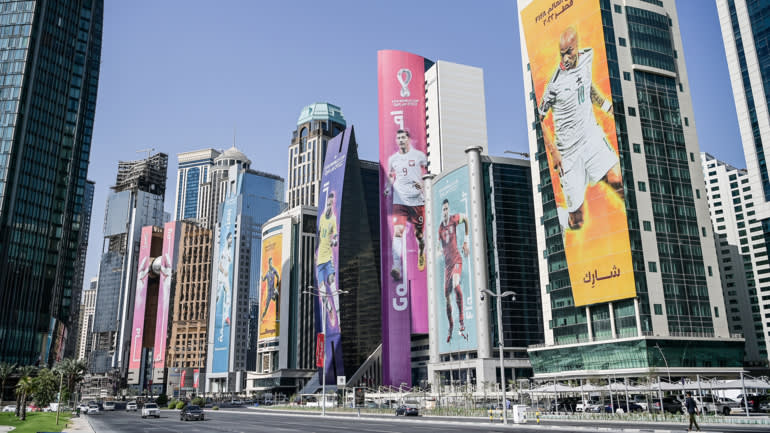Asia shows impressive performance at World Cup 2022: Soon to become FIFA’s “most important” place
- Tram Ho

Photo: Getty Images
Racing businesses are present
Only 6 out of 32 football teams coming to compete in the World Cup in Qatar this time are from Asia. Meanwhile, the number of companies based in Asia accounts for 9/14 of FIFA’s World Cup partners and sponsors.
It’s a remarkable change from 20 years ago, when Japan and South Korea co-hosted the World Cup for the first time in Asia. At that time, only 6/15 sponsors of this event came from the host countries, the rest came from Europe and the US.
Sponsorship is a big deal for FIFA. Behind the broadcasting rights, sponsorships are a major source of income for the World Cup organizers.
The tournament sponsors are divided into 2 components: those with direct relationship with FIFA; and global and regional sponsors directly related to the World Cup event.
Among the sponsors of this year’s World Cup for the first time is Indian education startup Byju, although the Indian team did not participate in this year’s tournament. The situation is similar for 4 Chinese donors and 1 Singaporean sponsor.
Asian TV market
While Asian teams still make up a relatively small percentage of the total participating teams, the region’s sponsors hope to reach large audiences, both at home and abroad. FIFA reported that, at the 2018 tournament in Russia, the viewership in Asia was 1.6 billion people, accounting for 43% of the total global viewership.
“The Asian TV market is huge, although it may not be as lucrative as elsewhere in the world,” Simon Chadwick, a professor of sport and geopolitical economics at the France-based Skema business school told Nikkei Asia. However, it is hypothesized that a strong presence in Asian markets that offer business appeal is likely to increase over the next 10 years.”
At the 2018 World Cup, three of the top five countries in terms of viewership were in Asia. These numbers are encouraging sponsors like Byju.
Arunava Chaudhuri, an Indian sports consultant who has worked with major European clubs, said: “There has been a general trend towards Asian sponsors for football, but there are very few sponsors. support from India, which means that Byju’s case this year is remarkable. They see sport as a way to connect with potential consumers and help the public get to know their brand and products.”
Byju aims to reach 10 million students in India by 2025 and also build its global reputation. “We are delighted to be sponsoring the FIFA World Cup Qatar 2022,” founder and CEO Byju Raveendran said in March.

Seize the opportunity
World Cup sponsors are also eager to seize the opportunity to reach large international and domestic audiences. China accounted for 18% of the World Cup’s global audience and now accounts for more than a quarter of FIFA’s partners and global sponsors for the 2022 World Cup.
“Chinese companies see sponsorship as a marketing or commercial purchase,” said Andrew Woodward, Visa’s former global sponsorship executive. This is an opportunity for them to increase their presence or show consumers in China that they stand alongside major global brands.”
The sole sponsor from Southeast Asia is Singapore’s Crypto.com, which participates as FIFA’s official cryptocurrency trading platform.
“Regional corporations are either unfamiliar with funding, or else they don’t see themselves as global businesses,” says Skema’s Chadwick. But over time, it looks like both of these things will change.”
At some stage over the next two decades, it is not difficult to imagine the scenario that Asia will become the most important region of FIFA financially.
Source : Genk
